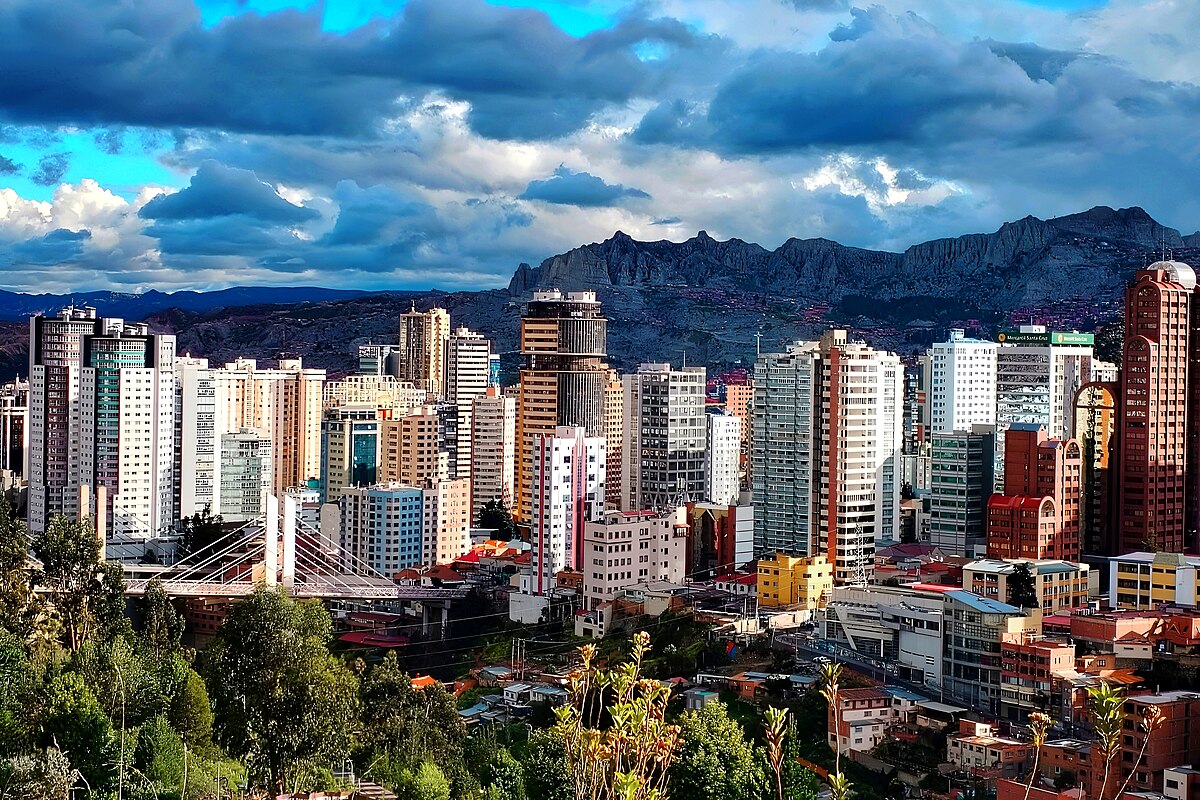La Paz is one of the most extraordinary cities in the world, remarkable for its location, history, and culture. In this place, ancient traditions coexist with modern life, and the city stretches along the steep slopes of a massive Andean valley. Its elevation is so great that many travelers call it the city above the clouds. Below is a collection of interesting facts, captivating details, and cultural insights that you may not have known. They offer a deeper understanding of the atmosphere and character of this unique city.
- La Paz is the highest administrative capital in the world. It sits at an elevation of approximately 3200–4100 meters above sea level. Visitors who come from lower altitudes often need time to adapt due to the thin air. Residents of La Paz have naturally adjusted to these conditions over many generations.
- The official capital of Bolivia is Sucre, but La Paz serves as the seat of government. The presidential palace, parliament, and key ministries are located here. This arrangement is the result of historical compromises dating back to the nineteenth century. It gives Bolivia a political system unlike that of most other countries.
- The city is situated in a vast mountain basin surrounded by the slopes of the Andes. Buildings and streets appear to cascade down the steep sides of the valley. The surrounding mountains also provide natural protection against strong winds. The landscape of La Paz is especially striking at sunrise and sunset.
- The peak of Illimani towers above the city. It is one of the most recognizable symbols of La Paz and Bolivia as a whole. The mountain’s color shifts throughout the day, giving it a majestic and changing presence. Its image often appears in local artwork and souvenirs.
- La Paz is home to Mi Teleférico, the largest urban cable car network in the world. It connects districts located at different elevations, making everyday transportation easier. For tourists, it serves as both transit and a scenic viewpoint. The aerial routes offer spectacular panoramic views of the city.
- The historic center of La Paz blends colonial Spanish architecture with Andean cultural elements. Narrow streets, colorful facades, and stone buildings create a distinctive atmosphere. The city’s markets further enrich this impression with vivid colors, aromas, and daily life. It is a place where the past remains present.
- One of the most unusual areas in the city is the Witches’ Market. Here you can find herbs, amulets, dried plants, and items used in traditional rituals. Many locals still believe in the protective power of spiritual practices. For visitors, this market offers a unique window into ancient beliefs.
- The culture of the Aymara people plays a significant role in daily life in La Paz. Both Spanish and Aymara languages can be heard throughout the city. Traditional festivals and rituals are deeply rooted in Aymara heritage. This makes La Paz a strong center of indigenous identity.
- The city is home to the Museo de la Coca. This museum explains the historical, ritual, and medicinal significance of coca leaves. For the Andean peoples, coca has long been a sacred plant and a tool for adapting to high altitude. The museum also presents modern debates surrounding its use.
- La Paz is well known for its colorful festivals and parades. One of the most famous celebrations is Fiesta Grande de La Paz, featuring music, dance, and street processions. These events reflect Spanish, African, and Andean cultural influences. They bring vibrant energy to the city’s public spaces.
- Many viewpoints are located throughout La Paz, offering stunning views of the city and nearby mountain peaks. These places are especially beautiful at sunset. Both locals and visitors come to reflect, relax, and admire the scenery. The views contribute greatly to the city’s unique atmosphere.
- The contrast between old and modern districts is clearly visible. Traditional markets and historic houses stand alongside contemporary buildings and wider roads. This combination gives the city a dynamic and multilayered character. The architectural diversity is noticeable at every step.
- Women known as cholitas are an important cultural symbol of La Paz. They wear layered skirts, colorful shawls, and distinctive round hats. Cholitas often participate in festivals, dances, and community events. Their presence highlights a deep continuity of tradition.
- La Paz is a center of traditional Andean cuisine. Dishes commonly include corn, potatoes, llama meat, and locally made cheese. Many recipes have been passed down through generations unchanged. Culinary traditions remain closely tied to the region’s natural environment.
- The city’s nightlife is rich and varied. Live music, often featuring traditional instruments, can be heard in bars, clubs, and open plazas. Musicians perform ancient melodies in new interpretations. This creates a warm and lively atmosphere of cultural expression.
- La Paz serves as the main starting point for visiting Bolivia’s major natural wonders. From here, travelers depart to the Uyuni Salt Flats, Lake Titicaca, and high mountain national parks. The city functions as both a cultural gateway and a transportation hub. Its location gives it strategic importance in the Andean region.
La Paz leaves a lasting impression as a place of altitude, energy, and cultural depth. Daily life here reflects a balance between tradition and modern development. Each street and festival reveals its own story, carried through generations. This is a city that invites reflection, curiosity, and a new perspective on the world.





